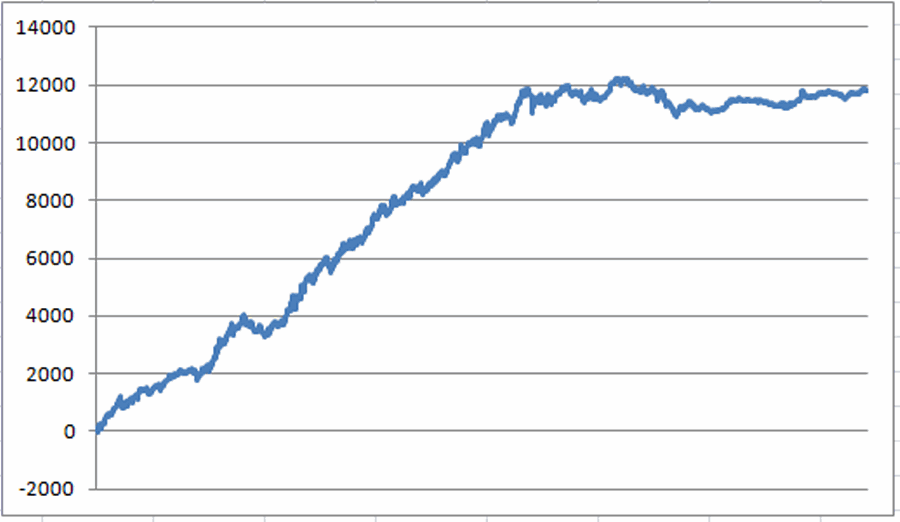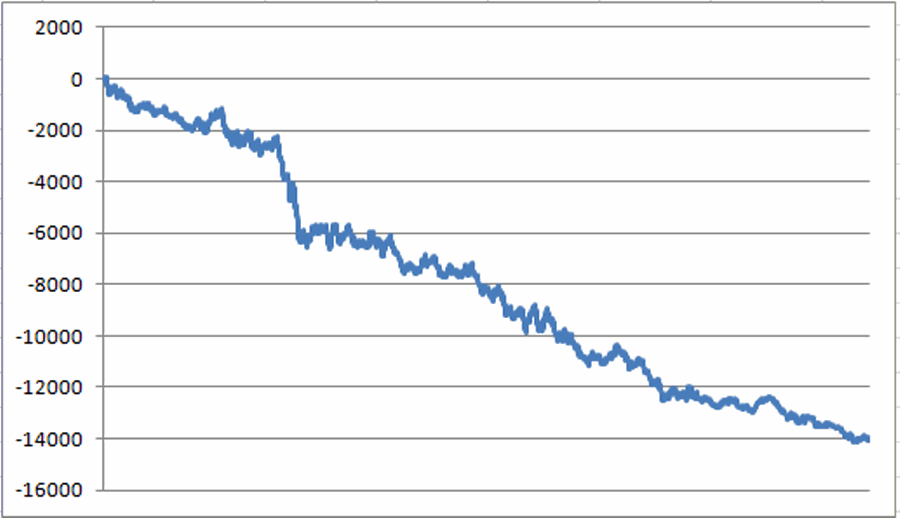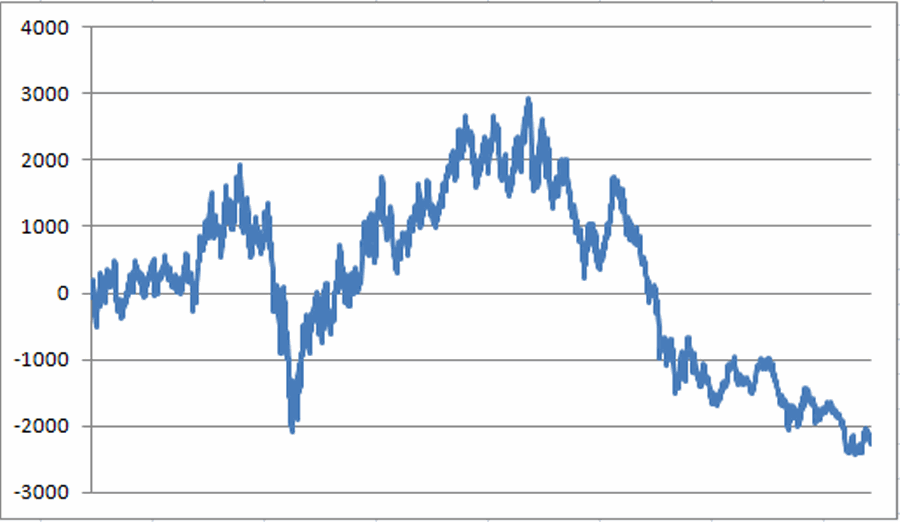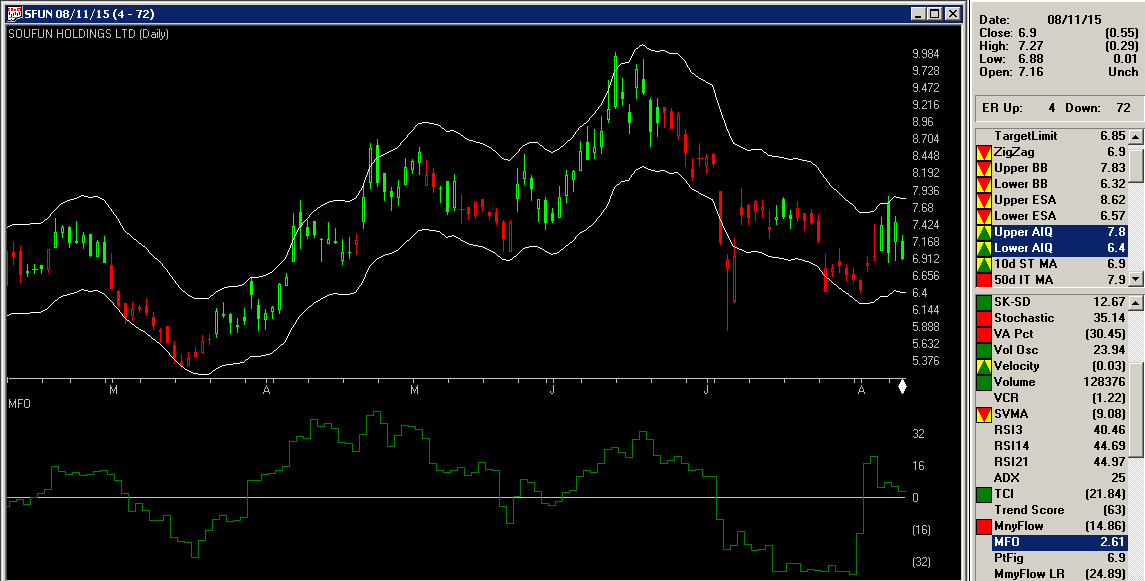Well, at least as far as I can tell. To understand what I am talking about consider the following results generated using daily open/high/low/close data for ticker GDX (an ETF that tracks gold mining stocks).
Figure 1 displays the cumulative $ gain/loss achieved by holding 100 shares of ticker GDX since it started trading in May 2006.
From May 2006 into September 2011, 100 shares gained $2,940.
Since then it has lost -$5,201 for a net cumulative loss of -$2,261. So that is our “baseline”.
GDX Overnight
Figure 2 displays the $ growth achieved using the following test.
Test #1:
Buy 100 shares of GDX at the close of trading each and every single trading day. Sell those shares at the open of the following trading day (this test does not deduct trading commissions. The sole intention is to display trading results achieved overnight).
 Figure 2 – $ gain/loss from holding 100 shares of GDX from each day’s close until the next day’s open
Figure 2 – $ gain/loss from holding 100 shares of GDX from each day’s close until the next day’s open
The net result is a gain of +$11,809. Through September 8, 2011 the gain was +11,827. Since then there has been a loss of -$18.
GDX in the Light of Day
Figure 3 displays the growth achieved using the following test:
Test #2:
Buy 100 shares of GDX at the open each and every single trading day. Sell those shares at the close of trading the same day.
 Figure 3 – $ gain/loss from holding 100 shares of GDX from each day’s open through the close of the same day
Figure 3 – $ gain/loss from holding 100 shares of GDX from each day’s open through the close of the same day
The net result is a loss of -$14,070. Through September 8, 2011 the loss was -$8,887. Since then there has been a further loss of -$5,183.
Go figure.
Summary
If you are considering buying gold stocks at the open this morning – you might want to consider sleeping in instead.
Jay Kaeppel
Chief Market Analyst at JayOnTheMarkets.com and AIQ TradingExpert Pro (http://www.aiq.com) client



